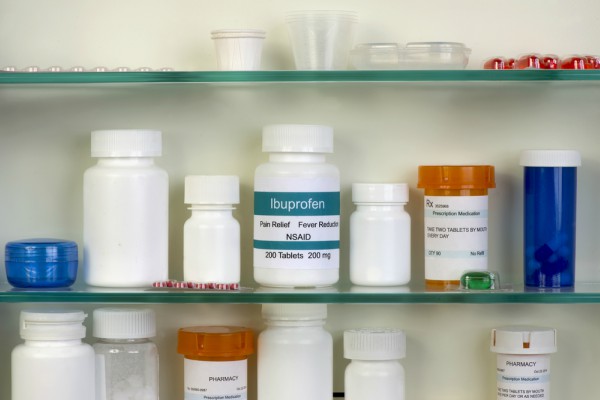Over-The-Counter (OTC) Drugs: Facts and Popular Categories in Canada and US
Over-the-counter medications, also known as OTC, is a group of drugs sold without a prescription. Prescription medications, on the other hand, can be sold only to those holding a prescription from a licensed physician. This classification is necessary to prevent drug misuse and protect the consumer — and other people — from its negative consequences.
How and why drugs are classified into Prescription and Over-The-Counter (OTC)?

Prescription and over-the-counter drug lists are managed by national health agencies such as the FDA in the United States and Health Canada in Canada. The drug is included in the non-prescription list when experts consider it safe and effective enough for self-administration. As such, non-prescription drugs should not be addictive or have a toxic effect. The patient should be able to self-diagnose the condition in which the drug is indicated, and conduct treatment based on the information provided in the leaflet.
However, evaluating each product isn’t necessary, as the decision is made for the generic drug, and not for the whole drug composition. For instance, a number of cold and cough medicines have dextromethorphan as their active agent, which makes these products over-the-counter.
Interesting facts about over-the-counter drugs
- Medicines can switch from one list to another. When a drug proves to be safe over time, it can be transferred to the OTC category. This is a standard procedure, as in case with levonorgestrel, the emergency contraceptive drug known as “the morning-after pill”, which is now freely available in Canada and the US. Discovering new facts about a drug, such as previously unknown dangerous side effects, etc., can also lead to an opposite switch from OTC to Rx, although it’s very uncommon.
- Formerly, drugs were mostly sold without a prescription. Before the relevant agencies appeared, it was possible to sell almost any substance claiming any properties or benefits. Some over-the-counter drugs contained alcohol, cocaine, marijuana, and opium, without any warning on the label.
- Although the respective lists in Canada and the US are quite similar, they are not identical. In Canada, drugs like Polysporin, Codeine, Pseudoephedrine (nasal decongestant), Robaxacet (analgesic and a muscle relaxant for back pain), Voltaren (NSAID, topical pain ointment), and many others can be purchased without a prescription, which is not the case in the US.
- OTC drugs prices in the US and Canada can vary significantly. As stated by a medical online-journal, many Americans travel to Canada to buy insulin, with prices growing rapidly in both countries. In Canada, a three-month supply of insulin pens can be obtained for $500, while in the USA the same product will cost $1,150.
- Over-the-counter drugs are considered safe for self-administration, however, they still require caution and responsible use. Exceeding the recommended dose may cause serious side effects, as in the case of dextromethorphan. DXM is known to be widely misused by the youth in order to “get high”. However, DMX abuse can lead to a heart attack, liver and kidney damage, depression and other mental disorders. Moreover, the FDA has reported 13 deaths related to common laxatives, as the latter can cause serious dehydration in case of long-term usage.
Most popular Over-The-Counter drug categories
OTC drugs are most commonly used to treat mild pains and aches, cough and common cold, fever, upset stomach, vomit, nausea, and heartburn. Less common uses include eye care, feminine hygiene, anti-fungal, etc. Here is an overview of the most popular OTC drugs sold in the US and Canada.
-
Cold and cough medicines
Cold and cough drugs have several sub-categories for alleviating different symptoms of cold and flu. Many products contain two, three or more active agents to address several symptoms at a time.
Available as: nasal sprays and drops, oral medications
Decongestants: for congested nose; prevent liquid leakage by narrowing the blood vessels in the nasal area.
Popular products: pseudoephedrine (Sudafed, Advil, etc.)
Antihistamines: alleviate allergic reactions such as runny nose, sneezing and itching.
Popular products: brompheniramine (marketed as Brovex, Veltane, Tanacof-XR, VaZol);
chlorpheniramine (Advil Allergy, NeoCitran, Novo-Pheniram).
Expectorants: thin mucus making it easier to cough up.
Popular products: guaifenesin (Hycofenix, Mucinex, Benylin, Buckley’s).
Cough suppressants: dextromethorphan (Delsym, Balminil, NeoCitran, Mucinex DM).
-
Antacids: for hearth burn, acid reflux and indigestion.
Working action: antacids help to neutralize stomach acid.
Available as: liquids, chewables, tablets to dissolve in water.
Popular products: calcium carbonate (Alka-Seltzer Heartburn), magnesium hydroxide (Mylanta).
-
Pain relief: to treat mild and moderate pain.
Available as: tablets, caplets, gelcaps, and liquids.
Popular products: acetaminophen, also known as paracetamol (Tylenol, Panadol);
NSAIDs (nonsteroidal anti-inflammatory drugs): ibuprofen, naproxen, meloxicam.
-
Laxatives: relieving constipation by increasing stool motility.
Available as: pills, capsules, liquids, suppositories.
Warning: prolonged use of laxatives can cause serious dehydration, kidney injury, and other complications. It is recommended to try fiber-rich diet, exercise and other natural means to prevent constipation.
Popular products: bulk-forming laxatives, fiber (Citrucel, Hydrocil, Psyllium), stool softeners (Colace, Dulcolax), stimulant laxatives (Alophen, Senosol, Clenpiq), osmotic laxatives (Fleet glycerin suppositories), Constulose, Glycolax.
-
Sleeping aids
Most OTC sleeping aids contain antihistamines because of their sedative effects. Unfortunately, our body quickly develops tolerance, so they are not suitable for long-term use.
OTC solutions for insomnia may include diphenhydramine, doxylamine succinate, melatonin, valerian.
